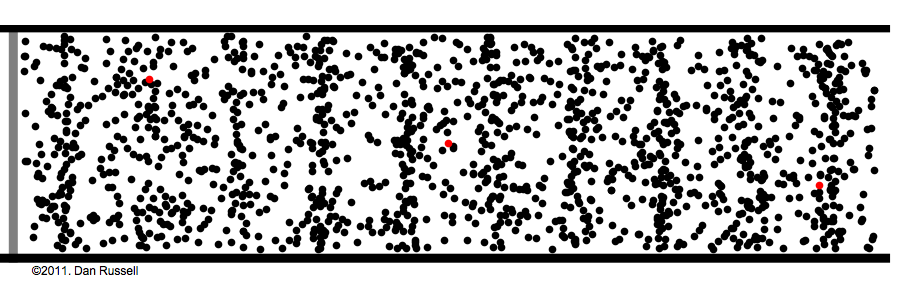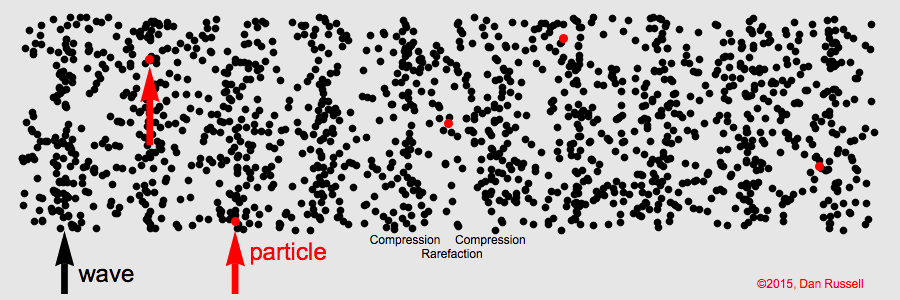Sound as a Longitudinal Wave
Soundwaves are a type of mechanical wave. As all mechanical waves require a medium to propagate through, soundwaves will therefore not pass through a vacuum. Soundwaves are produced when there is a source of vibration in a medium such as the vibration of a guitar string, a drum or the metal of a bell, all of which set the air near them vibrating. Soundwaves are longitudinal waves and the particles oscillate back and forth in the direction of energy transfer.
A soundwave is a series of compressions and rarefactions that form in the medium (usually air). A compression is a region where particles of the medium are closer together than when they are at their rest positions. Compressions are regions of higher than normal pressure for the medium. A rarefaction is a region where the particles of the medium are further apart than when in their rest positions. Rarefactions are regions of lower than normal pressure for the medium.


The rest positions of particles are their positions when no energy is being transferred through the medium. The amplitude of a soundwave determines the loudness or softness of the sound, its intensity. The larger the amplitude, the louder the sound. The frequency of a soundwave determines the pitch of the sound. A high frequency wave produces a high pitch sound and a low frequency produces a low pitch.
Example 1:
1) The diagram below represents a soundwave travelling through air.
Label the following on the diagram:
a) two different wavelengths
b) a compression and a rarefaction
c) an area of high pressure and an area of low pressure
2) If the frequency of the wave increased and the volume got louder how would that effect the particles in the diagram?
If the frequency increased the wavelength must get shorter. Therefore the compressions and rarefactions will be closer together. If the volume gets louder than the size of the particle oscillation, or amplitude would increase.
